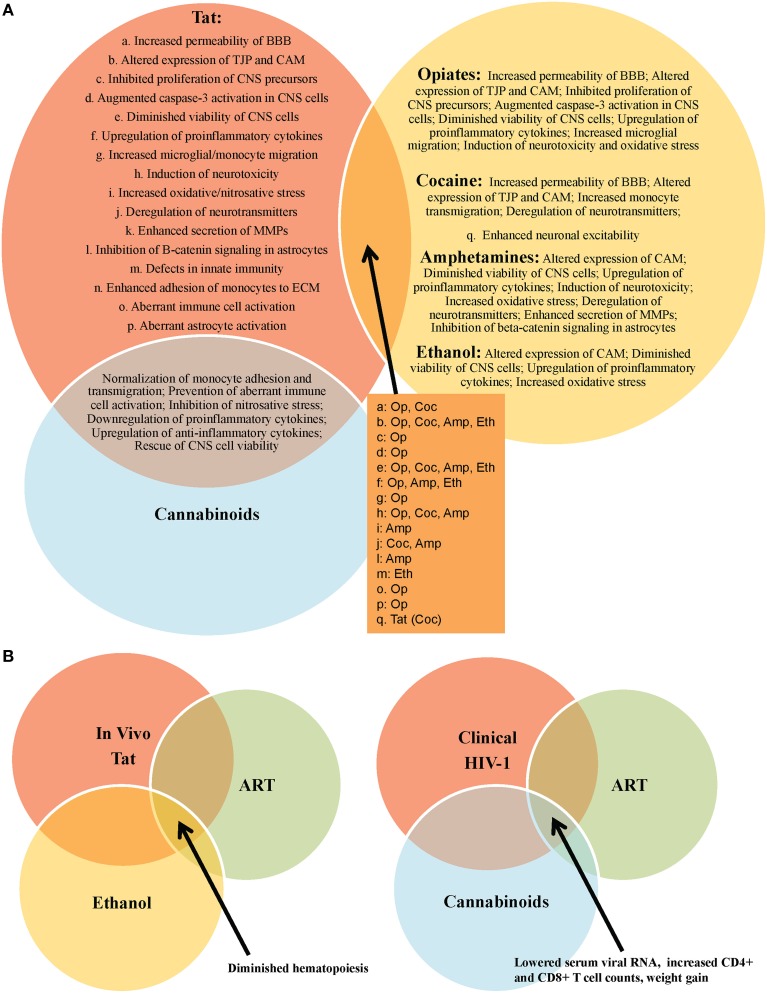Figure 2.
Outcomes of HIV-1 Tat interactions with various recreational drugs and antiretroviral therapy (ART). (A) Tat or drug use alone are capable of mediating significant damage to the CNS, however, these effects are often exacerbated in the context of comorbid illicit drug use in HIV-1-infected patients. In vitro experiments have provided vital information on the multiple molecular-, cellular-, and tissue-altering effects of Tat in the absence and presence of drugs of abuse, including opiates (op), cocaine (coc), amphetamines (amp), and ethanol (eth). One notable exception appears to be in the case of cannabinoids, which appear to mitigate several of the negative consequences of Tat exposure, in vitro. (B) In vivo experiments further support in vitro data on the negative impact of drug use (e.g., ethanol) in the context of HIV-1 infection in patients on ART. Interestingly, a clinical report demonstrates a possible role for cannabinoids as an adjunctive therapy in HIV-1-infected patients on ART.

